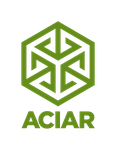Designing digitally-enabled education programs that scale
An intentional approach to ensuring education programs can scale with impact
Digitally-enabled education initiatives hold huge potential for increasing accessibility to learning and skills training, especially for those in remote and marginalised communities. They can increase engagement, personalisation, collaboration, and cost efficiency in education service delivery.
While some programs have clear plans to be expanded regionally, nationally or globally, often the commitment, funding or opportunity to scale is determined after implementation or a pilot phase. Sometimes, decisions to scale occur well after critical foundational decisions around design and implementation have been made.
In order to future-proof, avoid rework and really reap the benefits of elearning efforts, sustainability and scalability must be co-designed by partners and funders and embedded throughout program planning, design and implementation.
Understanding the financial model for elearning programs
Unlike traditional education and skills training programs, elearning approaches require increased upfront funding to support the research, design and development phases. They then operate on the principle of decreasing marginal cost, which means costs per user go down as you add additional users.
In contrast, the common model of textbook publishing, printing and distribution presents a tremendous logistical challenge in countries with dispersed populations. Similarly, in-person workshop-based professional development is challenging to deliver equitably and consistently. In both cases, costs per user remain or increase as the programs grow.

Decreasing marginal costs is a key advantage of elearning approaches over traditional modes of education delivery, with cost effectiveness increasing during scale-up.

Technology that scales
Decisions about technology for education programs cover two main components - hardware and software. Here, the concept ‘pedagogy before technology’ is key. It is critical to begin with the pedagogical goals we want to achieve in order to select the technology that best suits this specific education need.
Ecosystem enabling factors such as digital literacy and infrastructure availability should also be considered when building technology that scales.
Hardware
Hardware relates to the type of equipment and devices that will be required in order to deliver the educational goals.
Equipment selected should be appropriate, reliable, and affordable - both to resource and to maintain for the duration of the program, and importantly, beyond.
Efficiency, in terms of the efficient use of electricity, should also be considered both for environmental reasons and to reduce recurrent costs to both the learner and organisation managing the program.
Appropriateness refers to the devices that will connect and engage with your specific audience and the educational goals you seek to achieve. Do learners have access to, or know how to use, mobile phones, laptops, desktop computers or something else? Is expensive equipment such as laptops required to meet your educational objective?
Low cost smartphones are often the most flexible and viable for low-resourced or remote settings. Their intuitive design and accessibility features such as screen readers and hyper-legible fonts can also remove barriers for people with disabilities or limited digital literacy.
A BYOD (Bring Your Own Device) approach, which involves people using devices they already own, can reduce overall and ongoing costs, and contribute to continuing viability in scale-ups. In the countries Catalpa works, BYOD approaches focus on smartphones as these are most commonly owned devices.

The best technology is the one you already have, know how to use, and can afford - in most cases, this is increasingly the mobile phone.

Software
Software covers the tool or platform your users will interact with as part of your education program. Often one tool cannot solve all educational needs, so consider what suite of technologies need to be part of your “tech stack” to achieve your educational goals.
While the low upfront costs of an ‘off-the-shelf’ learning platform might be appealing, these generally have limited flexibility and are designed for english-speaking, tech-savvy learners in highly resourced environments, who can afford ample data and who have ready access to equipment - most often a laptop or desktop computer.
When designing an elearning experience for a group with unique contextual needs - such as those in remote or low-resourced communities - it is crucial that the software design reflects the needs of the learner.
In these contexts, greater engagement and results can be achieved by using a platform that can be customised to deliver in-language learning and culturally-relevant content. The format should suit the users’ context, such as low bandwidth limitations.
Digital literacy and infrastructure
Digital literacy and infrastructure are important pre-conditions or ‘ecosystem enabling factors’. In order to scale your project, you will need to be sure that the necessary infrastructure, such as electricity, 4G network, and lockable buildings, are in place to support this. We categorise this as a pre-condition as it is often beyond the budget, timeline, and scope of a program to ensure these basic requirements are met.
In some of Catalpa’s programs we’ve found ways of circumventing lack of infrastructure through the supply of equipment such as flat-pack lockable closets, solar panels, and charging stations.
Similarly, digital literacy of all stakeholders is required for programs to scale. Ensure basic training on devices is provided in the initial stages of implementation, and ensure the software tools are intuitive and simple to use, even for those with limited digital skills.
We consider digital literacy an enabling factor for successful digitally-enabled programs because this knowledge reduces barriers to learning, making it easier for people to change behaviours, in this case, to adopt a new pedagogical approach.
Processes that scale
Beyond considerations for hardware, software, infrastructure, and digital literacy, we’ve found several processes that aid in the scale-up and viability of digitally-enabled education programs.
Local embedding
Enabling the government or client to manage the education program should be a key milestone in the program roadmap. International development programs have timeframes, and even if donors are thinking long-term, they might design a program with a maximum duration of five or ten years. As a result, planning for ongoing viability and management beyond the program endpoint is critical.
At Catalpa, we focus on implementing programs within local governance structures from the outset by embedding our staff in government teams or organisations. We hire national staff who work alongside their government counterparts and even have them physically located in the organisation’s offices, when possible.
This enables them to strengthen government capacity through taking joint responsibility for work and training, building trust and transparency through regular communications, and being seen as part of the system, not separate from it.
Quality assurance
One strength of elearning is that it makes it easy to create and distribute content. As programs scale, there is a need for diversity in the teams who contribute to creating high-quality learning content.
Many of our government counterparts are very busy so finding other experts in the system who can support co-creation, localisation, and quality assurance is key. In some of our programs we’ve engaged subject matter experts, teachers, principals, and other passionate stakeholders as part-time ‘Fellows’ with stipends to support this critical co-design work.
Learning analytics
Data collected through the elearning software tool can aid in the testing of learning materials and software. By using feedback collected, improvements can be made to both the tool and the learning content.
Establishing collaborative processes should ensure feedback is shared and used by stakeholders such as user experience designers, Fellows, education specialists and instructional designers. This can support software and learning materials to be critically reviewed and regularly revised.
Beyond using data for software and learning content improvements, data can also be used to identify where greater program support is needed for specific learners, schools, or other sub-groups. Teams can be provided with training and support to use learning analytics software to capture feedback as learners progress through content, and to identify and rectify blockers to learner progress.
While moving from a proof-of-concept to a scaled-up program will inevitably have its challenges, with proper planning and adaptive processes, you can smooth out the journey.
Learn more about Catalpa's blended learning methodology and the projects we've delivered across the Asia Pacific region.














